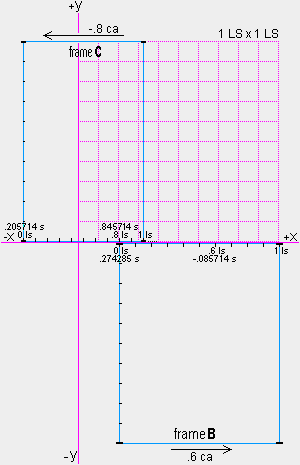
|
|
Virtual physical change ratio and gamma γ of relativity theory
Because relativity theory is based on observed, virtual relative velocities,
it creates a misleading picture of nature. In the spaceship experiment it led observers on ship B
to conclude that relative motion between ships A and B caused the observed slowing of the clocks on A
when no change in clock rate occurred on A. It leads to the conclusion that the gold nuclei in the
accelerator at Brookhaven are not actually flattened, but only appear flattened in the reference frame
of the lab. And in the spaceframes experiment (left) it causes the
observers(c) on both frames to observe their relative velocity as .9459 c
and to observe that the other frame is only a third as wide as their frame.
The virtual physical change ratio equation (below) specifies the virtual physical
change ratio (rBC) in terms of the virtual relative velocity (vBC). In the spaceframes experiment, where
vBC=.9459 c, rBC=.3243. This ratio of phenomena observed in another reference frame to the phenomena observed
in the observer's frame is equivalent to the gamma γ used in relativity theory to relate the observations
in one reference frame to the observations in another reference frame. In contrast to this conventional system of
conflicting observations based on the assumed constant speed of light c, an understanding of the consequences
of the qm permits all observers to use absolute units of time, distance, and mass, so their observations all agree.
It is unnecessary to reconfigure the logical foundations of physics by combining space and time into spacetime.

|
|



